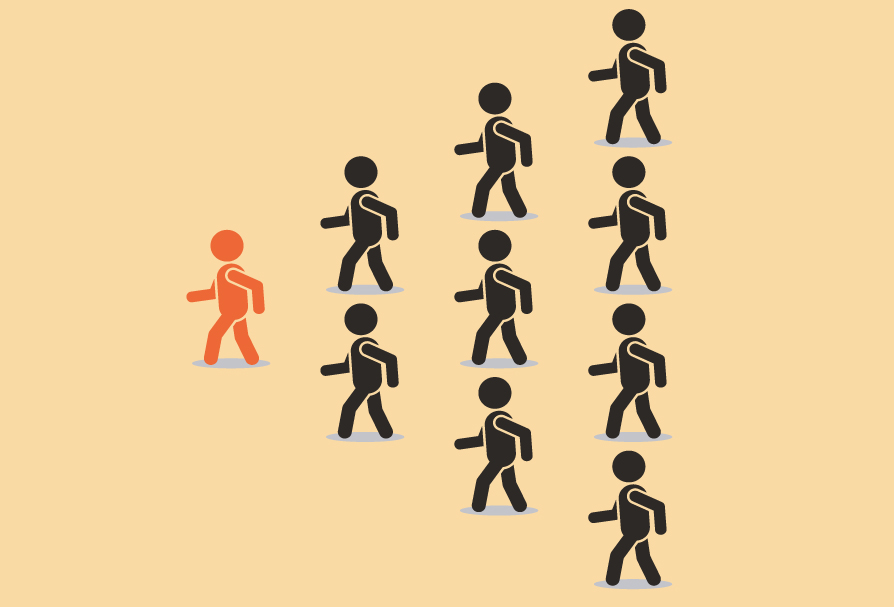When vlogger Zoella posts a video about her latest Primark haul, she gets 1,671,280 views within a day, along with a stream of enthusiastic comments such as “your hauls are literally the best”, “I legit went to primark and got some of those things on Sunday” and “WHERES YOUR LAMP FROM X”. But not all brands can afford to partner with likes of Queen Z or get past their gatekeepers, which is partly why micro-influencers with slightly smaller networks are now finding themselves being courted by marketers.
Taking a stab at defining what micro-influencers are, Time Out recently divided influencers into two categories: shakers – celebrities and social-media stars with massive followings – and makers – people who are very knowledgeable about their area of interest but have a more modest following. The magazine’s research found that makers are 10% more likely to successfully influence somebody else to take an action, despite having fewer followers.
Meanwhile, Takumi, the micro-influencer marketing platform, recognises that the average person might have as many as 500 connections, consisting of friends, family and casual acquaintances they maybe met at a party one time. But it believes that it’s when a person’s network starts to grow beyond that inner circle that their ability to influence other people’s behaviour starts to get more powerful. The platform classes micro-influencers worth pursuing as people who have anywhere between 1,000 to 150,000 followers, though the average is around 12,000. “You often find that people with slightly smaller networks tend to have more conversations with their audience,” says Solberg Audunsson, the company’s co-founder. “12,000 followers is a good number for you to start to see genuine back-and-forth interactions because people realise they’re more likely to get a response than if they were messaging Kim Kardashian.”
But while being part of a more tight-knit community is what makes micro-influencers so valuable, this tendency to fly under the radar also makes them difficult to discover in the first place. Fortunately, there are a plethora of tools that promise to take some of the hassle out of the search process by automating a lot of the work. These tools have algorithms that can scan social media and blogs, looking for people with a certain number of followers and engagement rates.
The work doesn’t stop there though. Influencer marketing has become a lucrative trade and some people are taking part in like-for-like schemes using certain hashtags or simply paying for bot followers. And since the last thing brands want is to splash their precious budget on someone who doesn’t have that many genuine followers, many tools can now tell when a follower’s fake. “The algorithms are very good at detecting the giveaway signs, like comments that aren’t on topic or lots of activity from private accounts,” says Audunsson. He also acknowledges that there is some element of human judgement involved: Takumi is constantly refining its pool of influencers, putting some on the no-go list if they’ve been found to have misled a brand about their following. “Just like Uber manages its driver pool, we manage our influencer selection,” he says.
Not everyone’s convinced that this level of automation is necessarily the best method of screening micro-influencers however. “In my experience a lot of tools tend to point you towards the biggest and most obvious people: you need to dig down a layer to find the really niche influencers who can help you make a difference,” says Jodi Mullen, influencer marketing lead at Yard Digital, the digital marketing agency. “A lot of it comes down to having your ear to the ground and knowing what’s going on in your industry and whose content is being shared. You then need to judge for yourself if a real conversation is happening and, crucially, if there are any signs of people actually being influenced.” But this approach is clearly very resource intensive, which is perhaps why you don’t see more startups working with micro-influencers.
And once an influencer is on board, brands need to resist their control-freak tendencies if they want to get the most out of the partnership. “Not giving influencers creative control is a huge mistake many brands make,” says Alice Bates, a blogger and social-media star who uses the Influencer platform to connect with brands. Bates has even seen marketers commit the ultimate faux pas: handing over their own corporate-looking photos and expecting her to post them – something she would never do. “At the end of the day, I’m influencing a person’s decision to buy a product based solely on what I’m posting and I have a certain responsibility to them,” she says. Micro influencers like Bates have created strong connections with their networks. To their followers, they’re not just some out-of-reach celebrity: they’re a lifestyle coach, therapist and even a friend. Brands need to respect that relationship and recognise that an influencer’s first responsibility is serving their audience.
Besides, influencer marketing works precisely because it’s more subtle and authentic than traditional, in-your-face ads. Ramming your brand down people’s throats via the medium of an influencer isn’t much better than bombarding them with push messages. “Consumers are getting better at recognising marketing and have become more skeptical: they don’t like to feel like they’re being misled,” says Mullen. “If you force-feed people content rather than trusting that the influencer knows their audience better than you, you’ll rub people up the wrong way. There are lots of cringeworthy examples of that out there.”
And of course new regulation introduced by the Committee of Advertising Practice now puts a bigger onus on brands to clearly label when a piece of third-party influencer content has been paid for. But that needn’t make your campaign any less effective. “Most people understand that influencers need to make a living and consumers are actually very open to branded content, when it’s done right,” adds Mullen.
If handled the right way, working with micro-influencers could see you rack up the shares and retweets. However brands shouldn’t get too distracted by shiny engagement stats in isolation. “Generating a million likes is all well and good but you need to ask what it means for your bottom line: did you sell more products? Did you get more subscribers?” he says. “If you can’t show a correlation between influencer marketing activity and those figures, what’s the value?” ![]()
Share via:








































